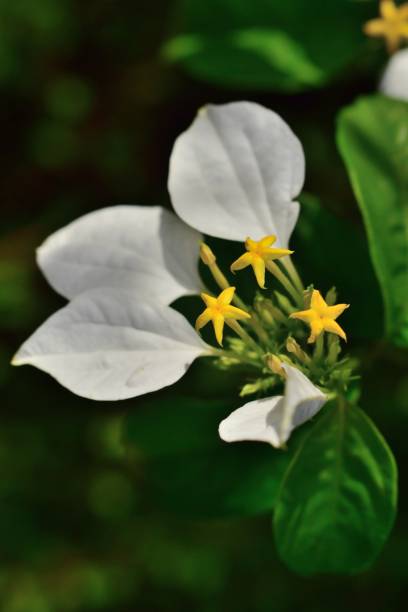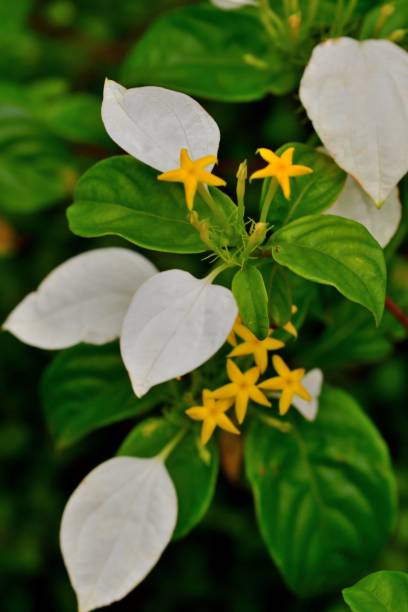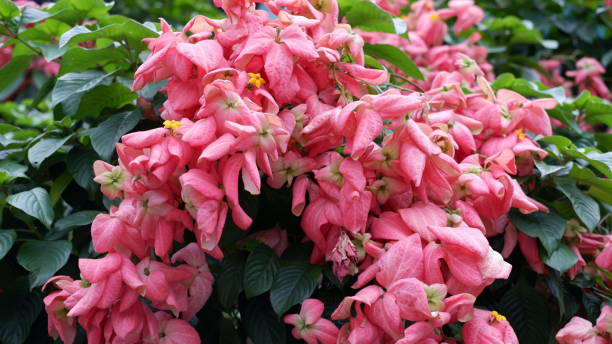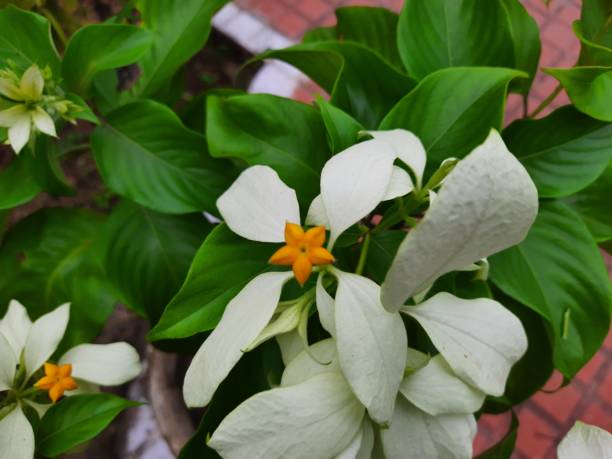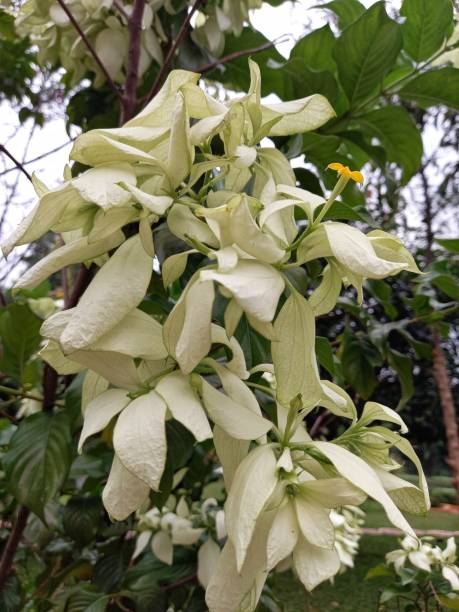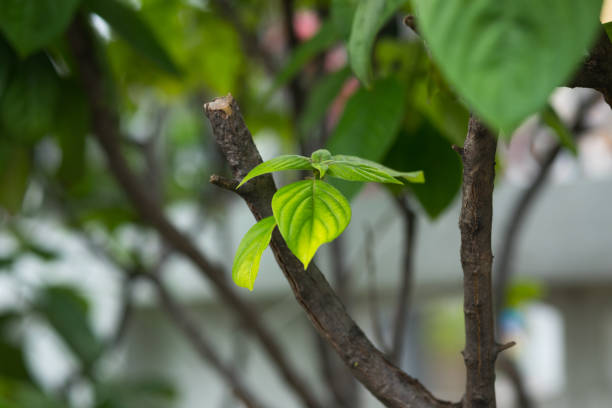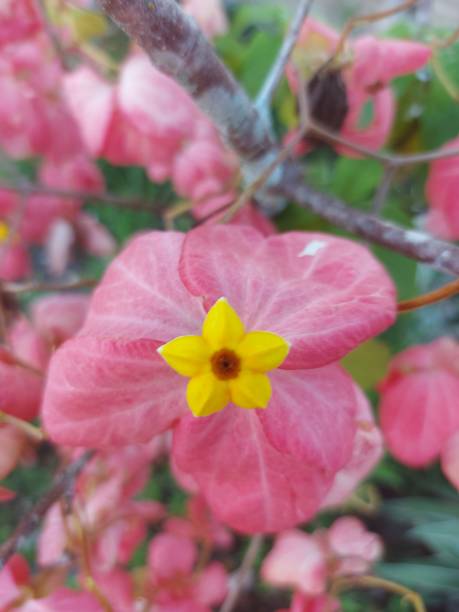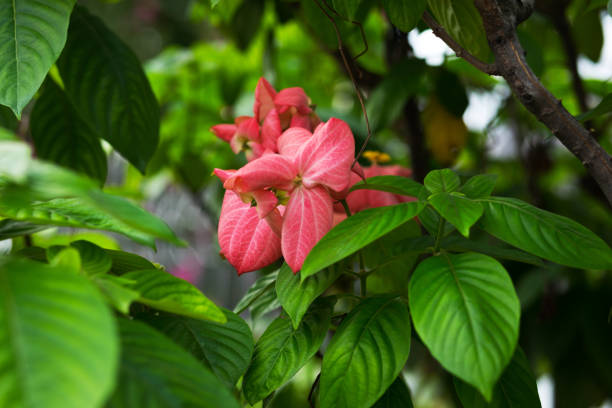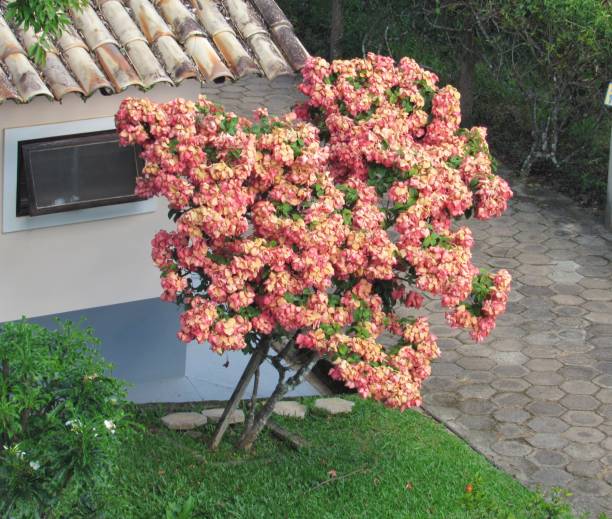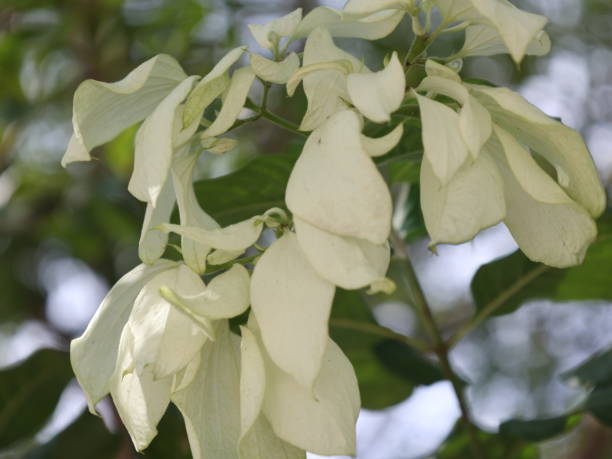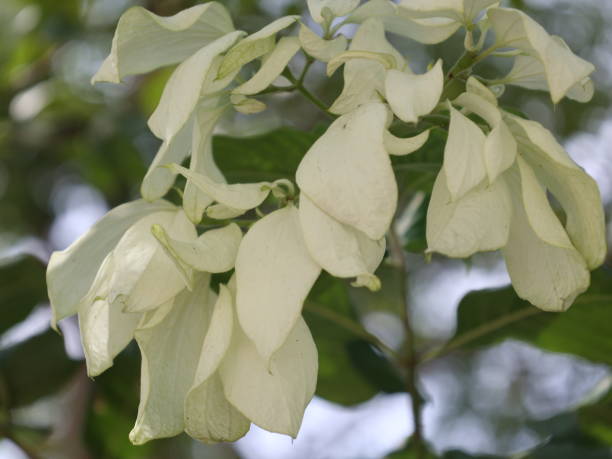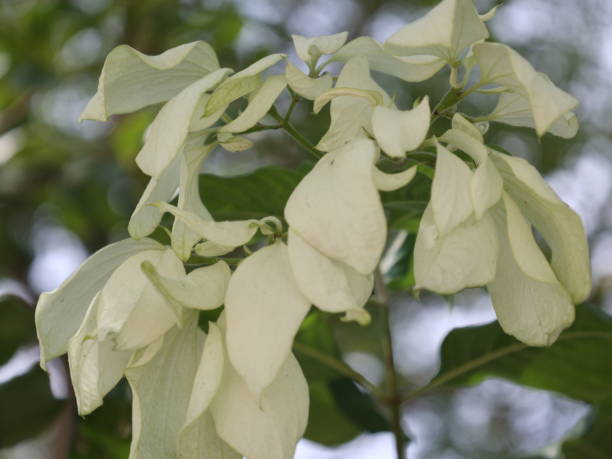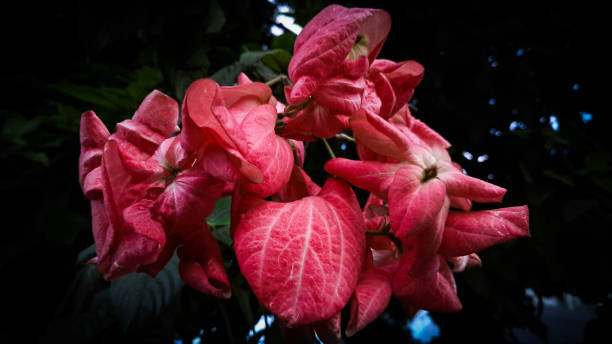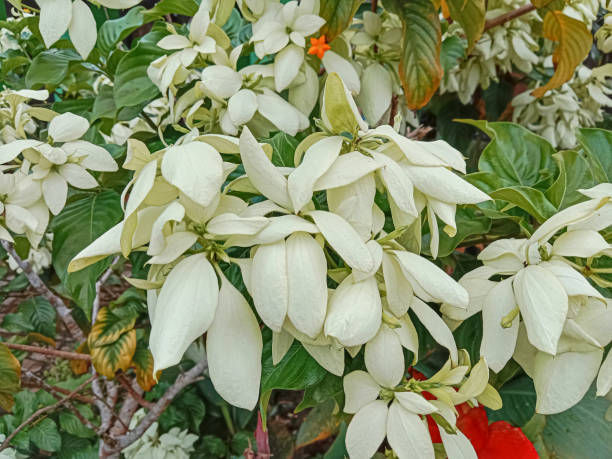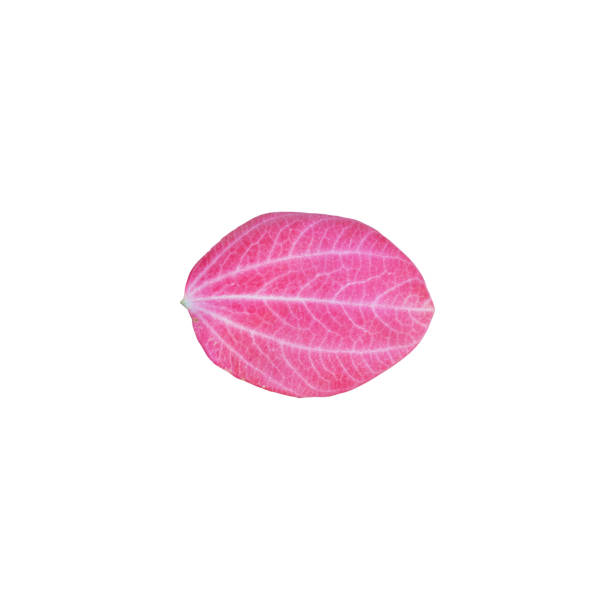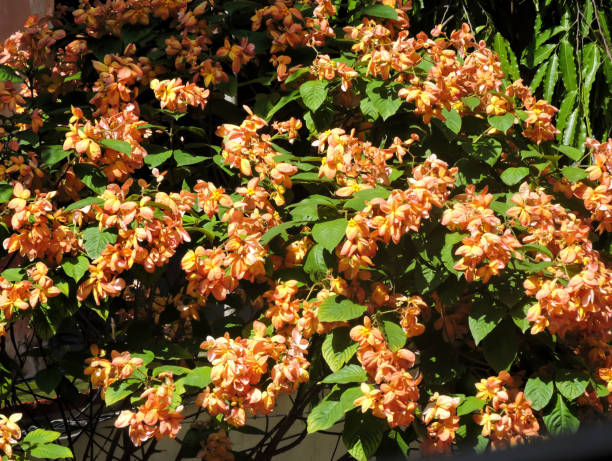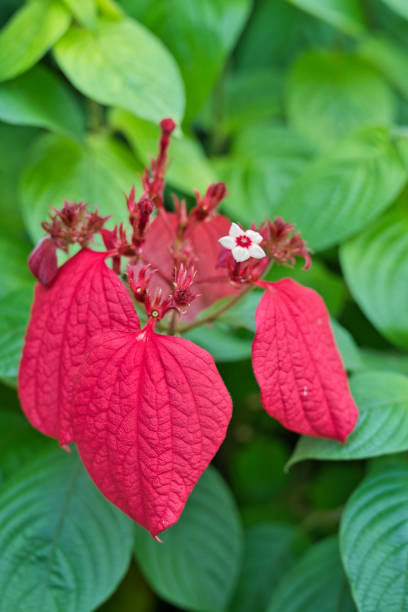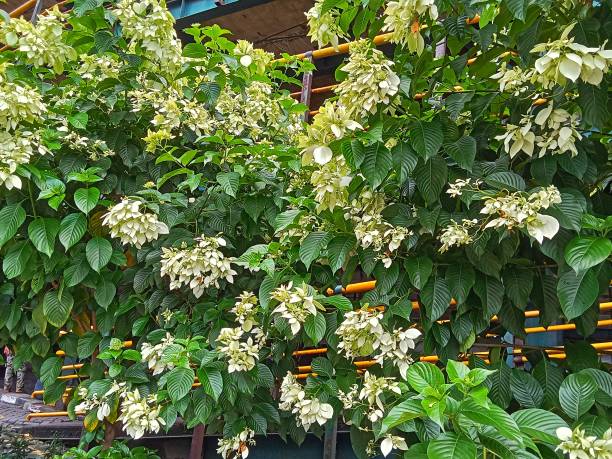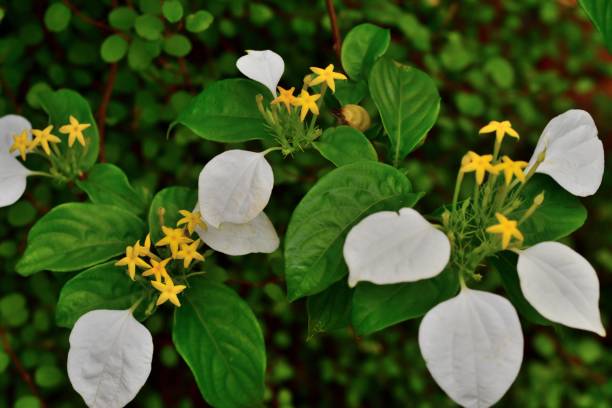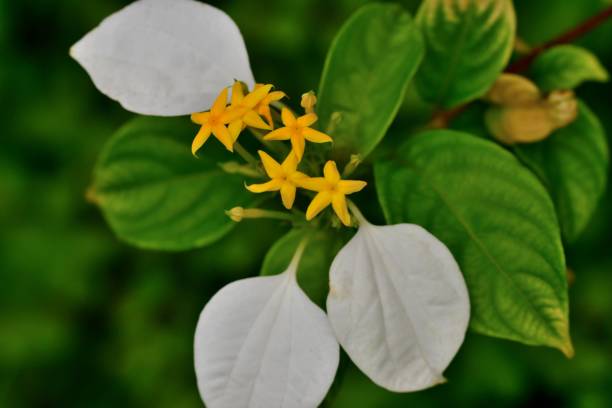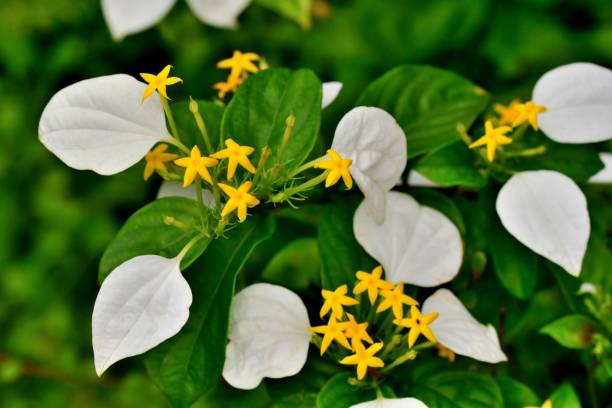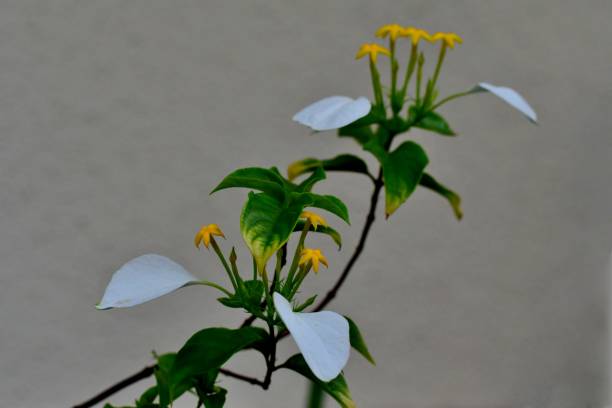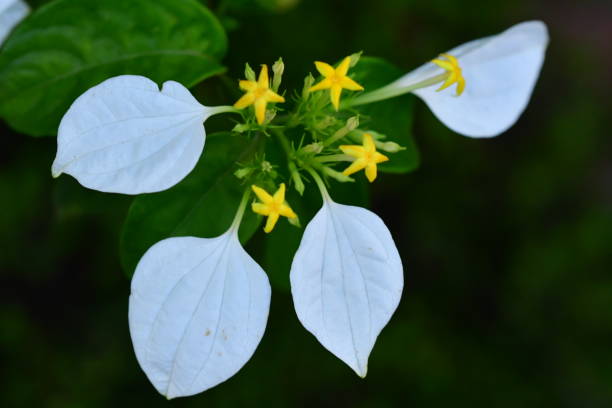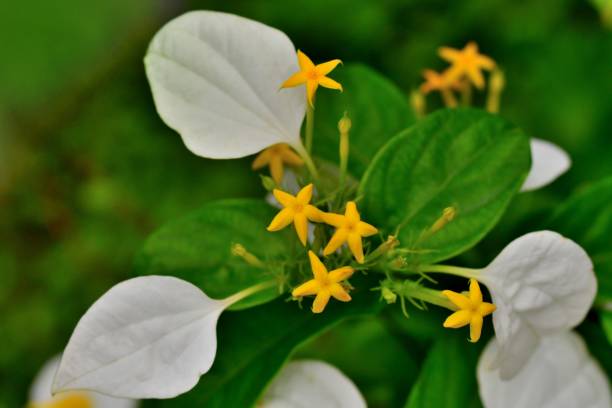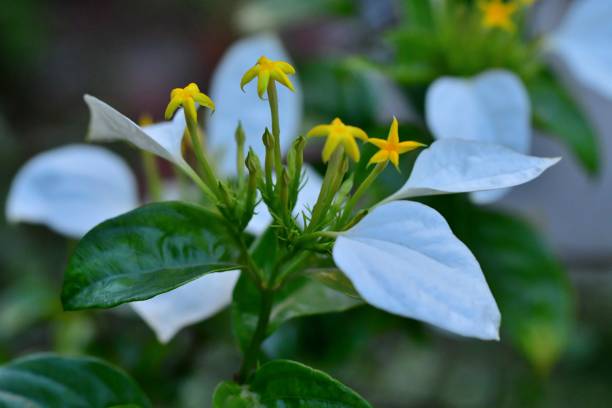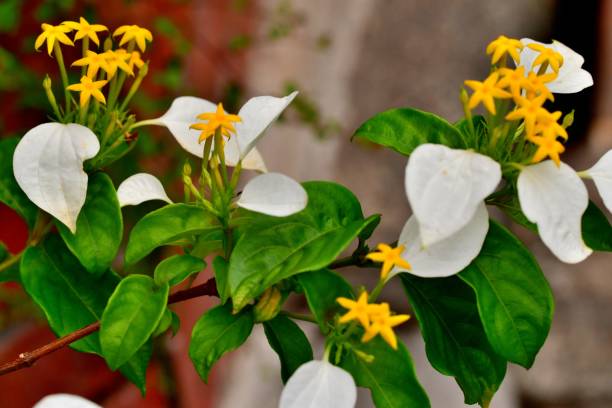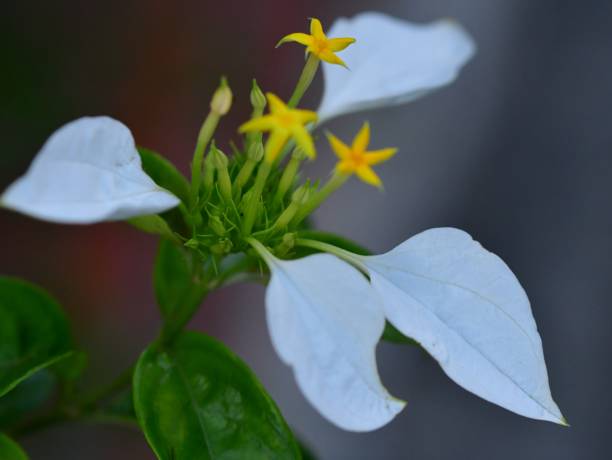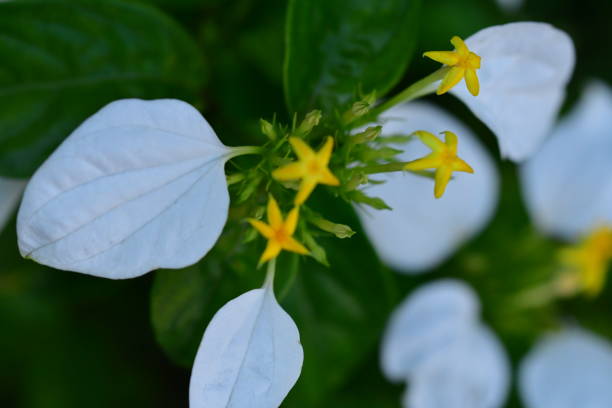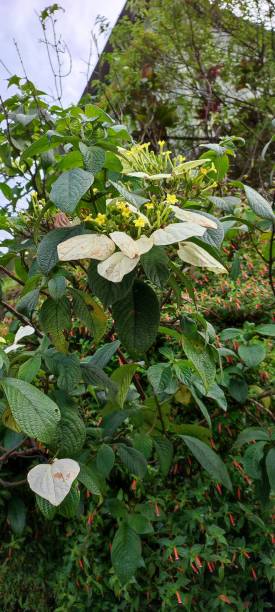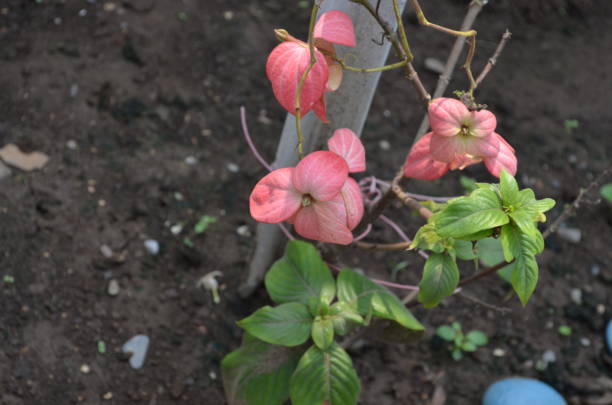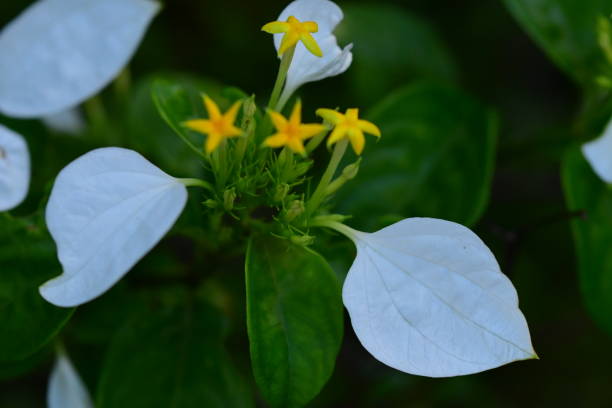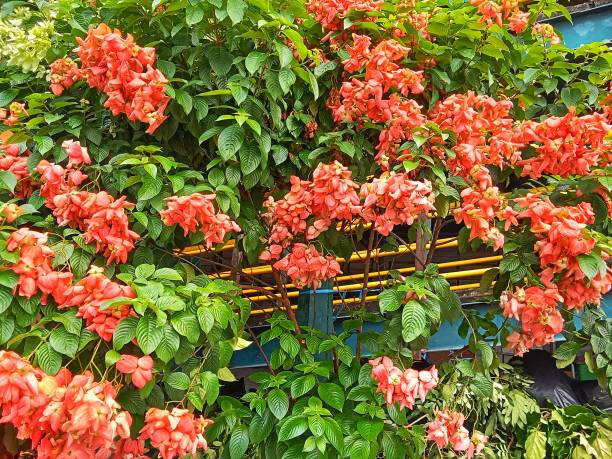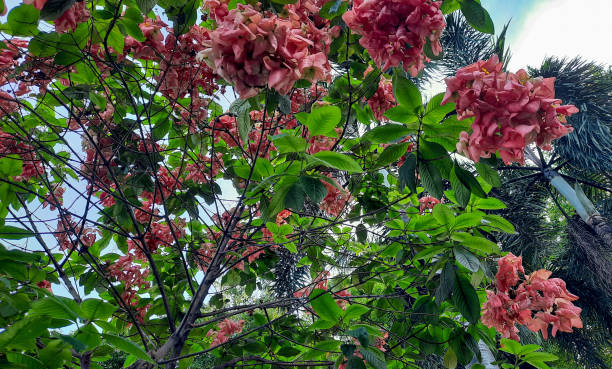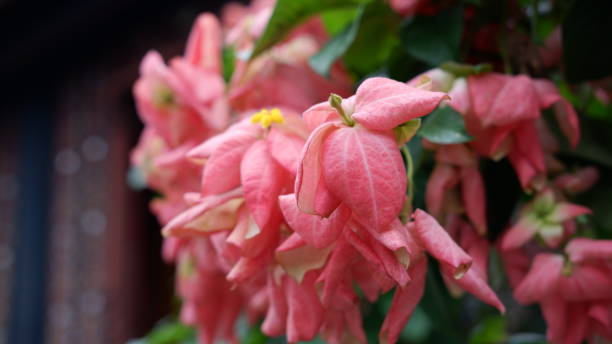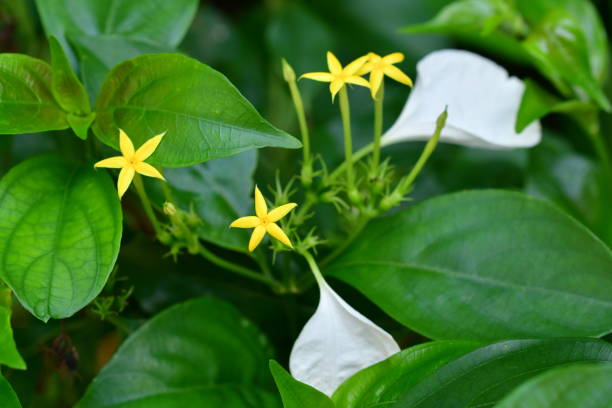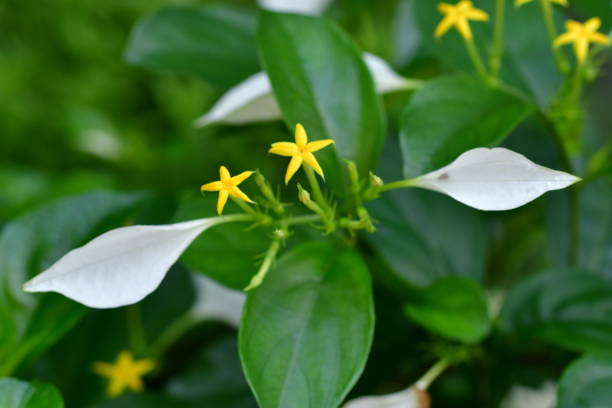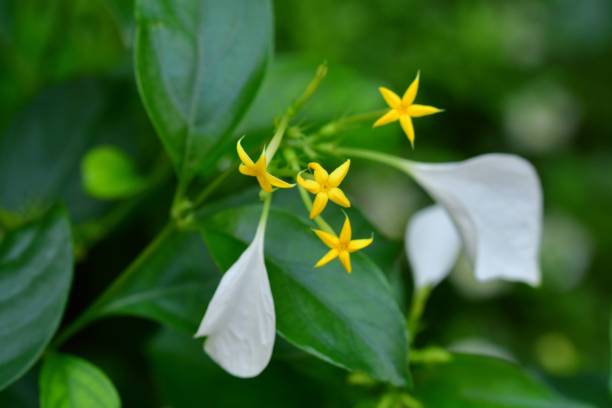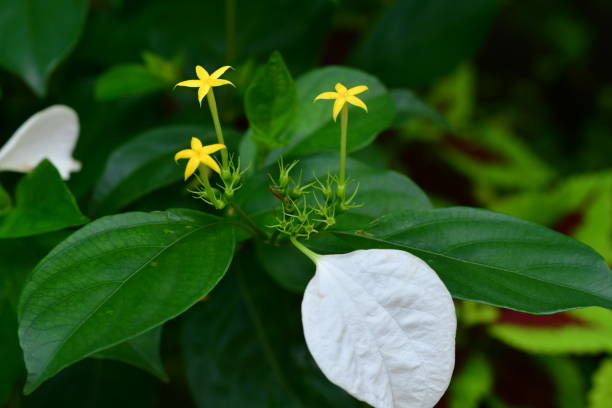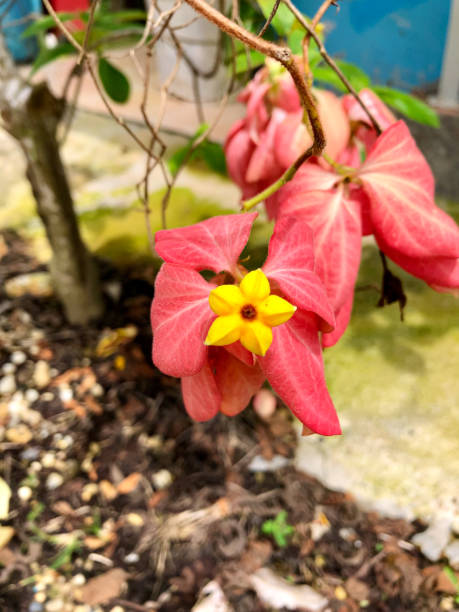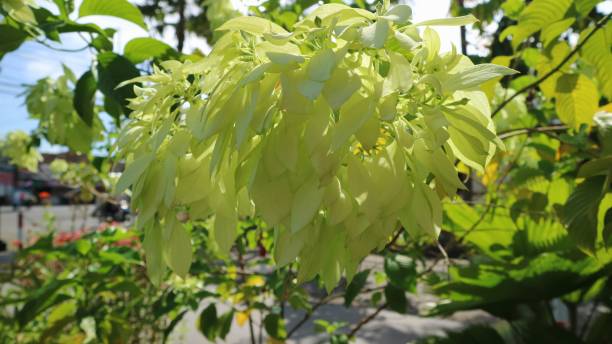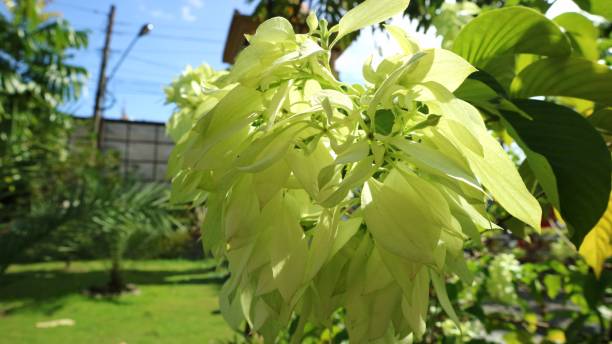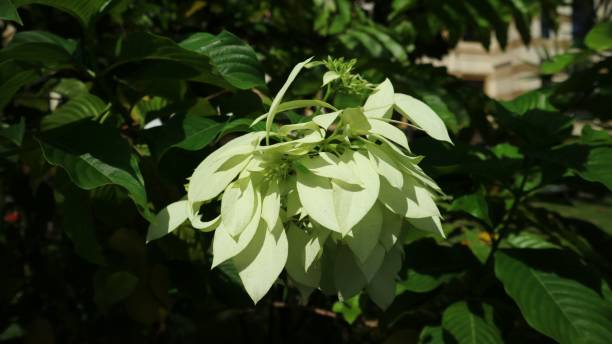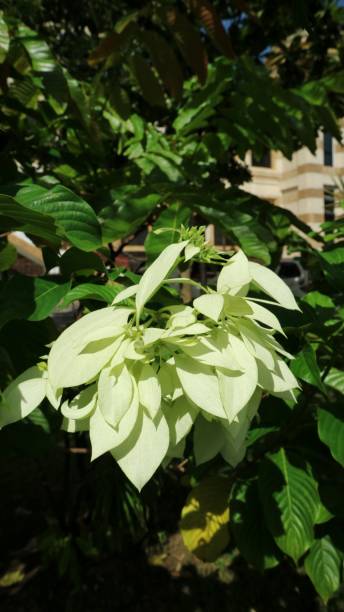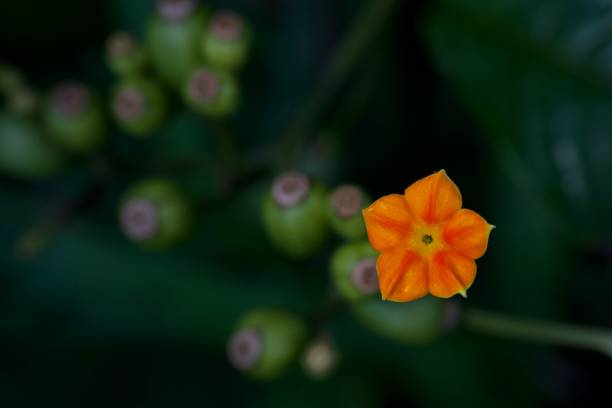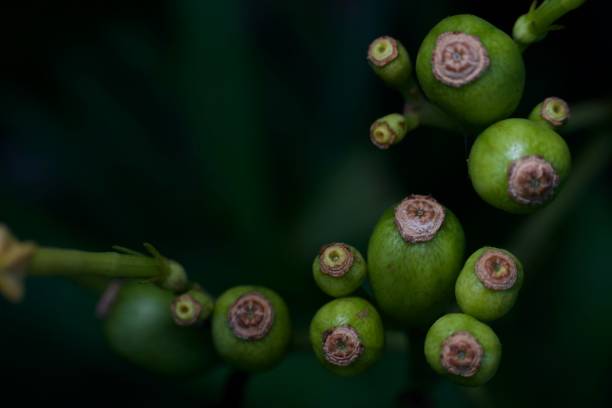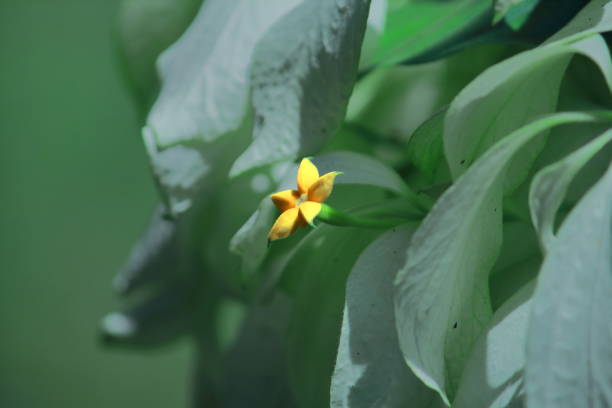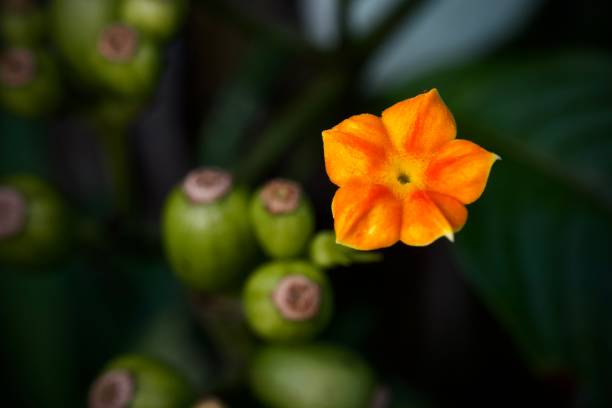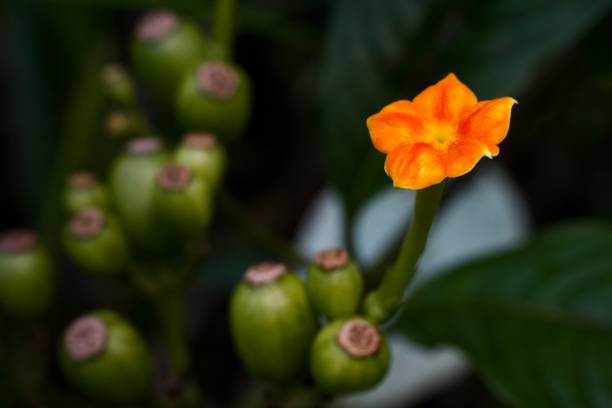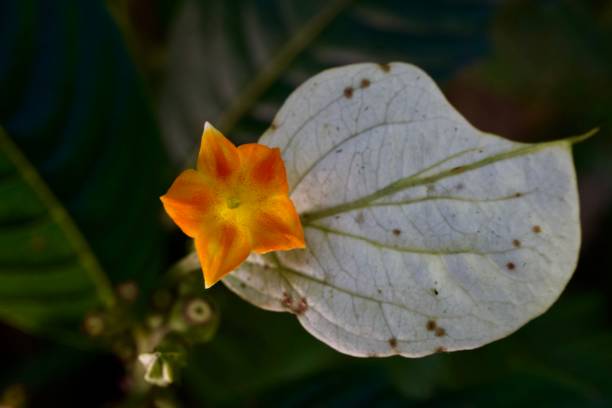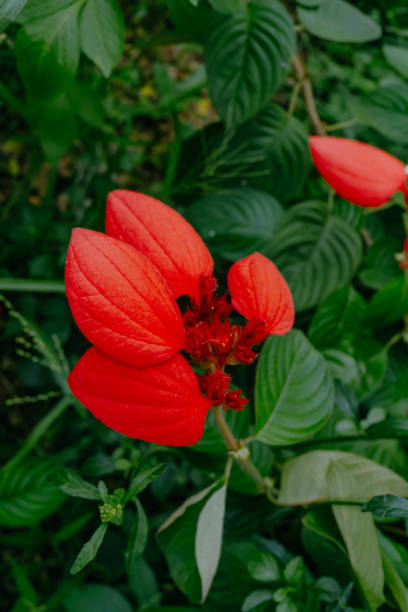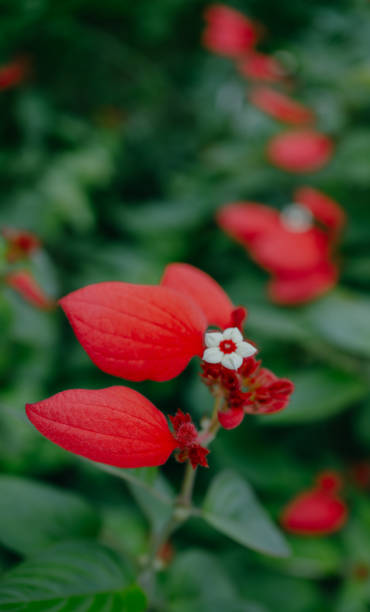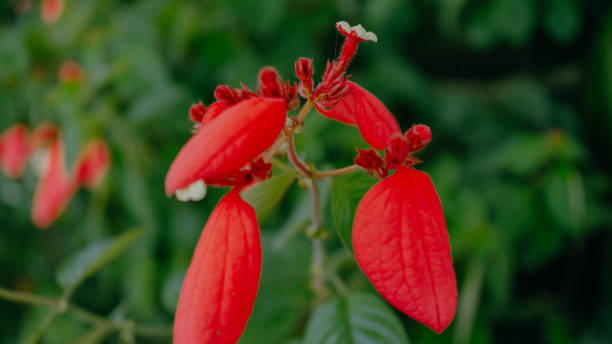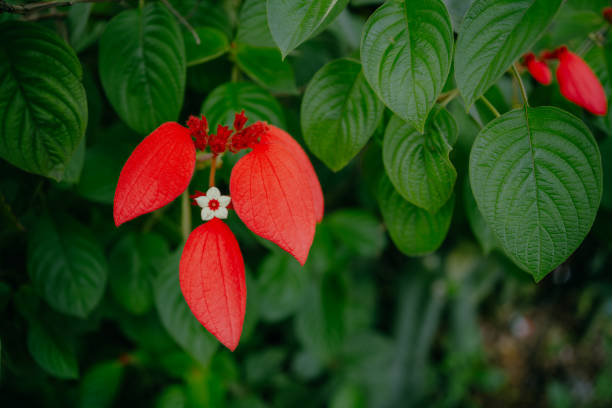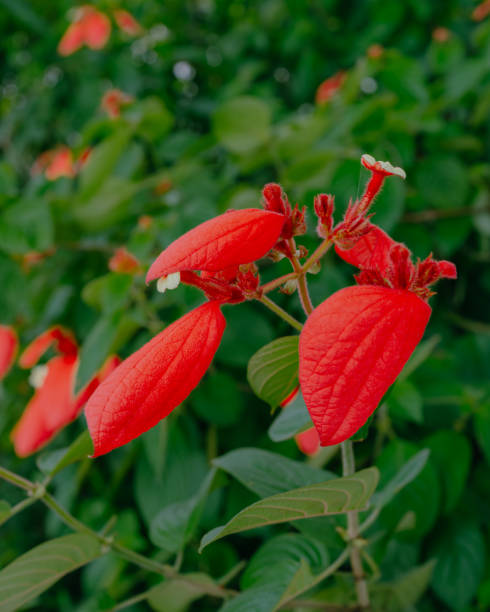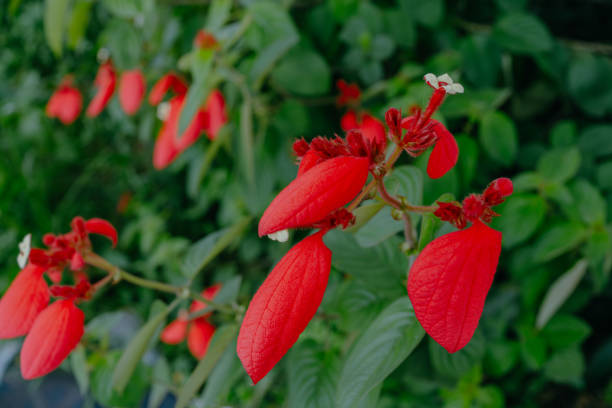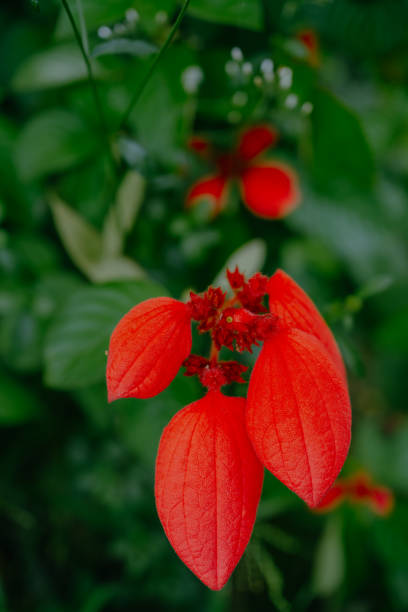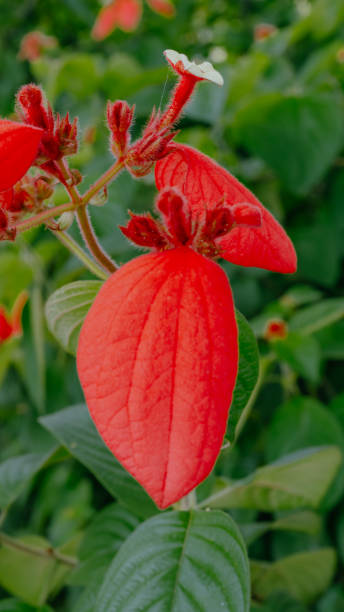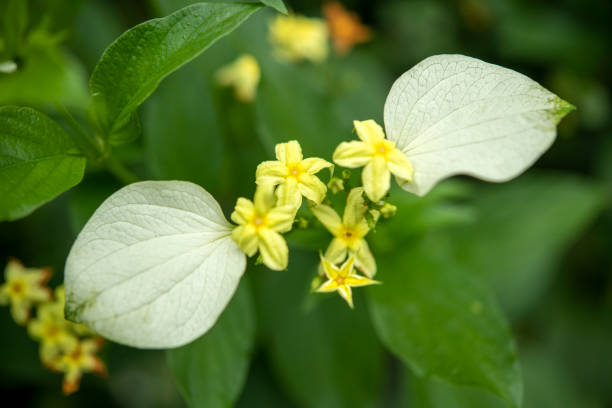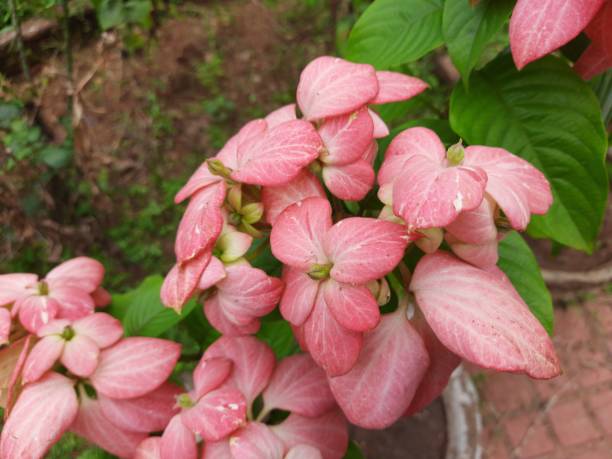
Mussaenda Parviflora Pictures, Images and Stock Photos
Browse 60+ mussaenda parviflora stock photos and images available, or start a new search to explore more stock photos and images.

Native to Tanegashima Island of Japan, Taiwan and southern China, Mussaenda parviflora is an evergreen shrub in the Rubiaceae family (the Madder family). The flowers are small, yellow and tubular, and bloom from July to September in corymbs-like clusters. Each flower has a large white leaf-like sepal (bract).
Native to Tanegashima Island of Japan, Taiwan and southern China, Mussaenda parviflora is an evergreen shrub in the Rubiaceae family (the Madder family). The flowers are small, yellow and tubular, and bloom from July to September in corymbs-like clusters. Each flower has a large white leaf-like sepal (bract).
The beautiful Mussaenda philippica, Dona Luz or Dona Queen Sirikit bloom in the garden
White flower ornamental plant
Many white mussaenda are cultivated for ornamental purposes and have been introduced to regions of the planet where they are not native. Originally, they were found in tropical regions of Asia, Africa and the Pacific Islands. White mussaenda can grow as trees, shrubs and vines.
Ashanti blood, red flag bush or tropical dogwood (Mussaenda erythrophylla), known as 'mussaenda-rosa' in Brazilian Portuguese, from the Rubiceae family. Shot in Alto Paraíso de Goiás, Goiás state, Brazil.
Mussaenda or "nusa indah" ornamental plants with red leaves grow in the garden of the swimming pool behind the hotel in the city of Jambi
Mussaenda or "nusa indah" ornamental plants with red leaves grow in the garden of the swimming pool behind the hotel in the city of Jambi
Mussaenda or "nusa indah" ornamental plants with red leaves grow in the garden of the swimming pool behind the hotel in the city of Jambi
Mussaenda, also known as Nusa Indah, Ashanti blood, or Tropical dogwood, is a shrub native to West Africa
White Mussaenda Philippica flowers. The White Mussaenda flowers or Dona Aurora or Dona Queen Sirikit. Mussaenda flowers blooming in the garden.
Marmalade Mussaenda is a new and distinct cultivar of Mussaenda, formed by hybridization of female parent Mussaenda philippica ‘Dona Luz’ and male parent Mussaenda luteola. Family- Rubiaceae. India.
Mussaenda erythrophylla, commonly known as Ashanti blood, red flag bush and tropical dogwood, is an evergreen West African shrub, inside the flower exotic garden, Mahe, Seychelles .
Mussaenda pubescens or mussaenda flower bloom in the garden
Native to Tanegashima Island of Japan, Taiwan and southern China, Mussaenda parviflora is an evergreen shrub in the Rubiaceae family (the Madder family). The flowers are small, yellow and tubular, and bloom from July to September in corymbs-like clusters. Each flower has a large white leaf-like sepal (bract).
Native to Tanegashima Island of Japan, Taiwan and southern China, Mussaenda parviflora is an evergreen shrub in the Rubiaceae family (the Madder family). The flowers are small, yellow and tubular, and bloom from July to September in corymbs-like clusters. Each flower has a large white leaf-like sepal (bract).
Native to Tanegashima Island of Japan, Taiwan and southern China, Mussaenda parviflora is an evergreen shrub in the Rubiaceae family (the Madder family). The flowers are small, yellow and tubular, and bloom from July to September in corymbs-like clusters. Each flower has a large white leaf-like sepal (bract).
Native to Tanegashima Island of Japan, Taiwan and southern China, Mussaenda parviflora is an evergreen shrub in the Rubiaceae family (the Madder family). The flowers are small, yellow and tubular, and bloom from July to September in corymbs-like clusters. Each flower has a large white leaf-like sepal (bract).
Native to Tanegashima Island of Japan, Taiwan and southern China, Mussaenda parviflora is an evergreen shrub in the Rubiaceae family (the Madder family). The flowers are small, yellow and tubular, and bloom from July to September in corymbs-like clusters. Each flower has a large white leaf-like sepal (bract).
Native to Tanegashima Island of Japan, Taiwan and southern China, Mussaenda parviflora is an evergreen shrub in the Rubiaceae family (the Madder family). The flowers are small, yellow and tubular, and bloom from July to September in corymbs-like clusters. Each flower has a large white leaf-like sepal (bract).
Native to Tanegashima Island of Japan, Taiwan and southern China, Mussaenda parviflora is an evergreen shrub in the Rubiaceae family (the Madder family). The flowers are small, yellow and tubular, and bloom from July to September in corymbs-like clusters. Each flower has a large white leaf-like sepal (bract).
Native to Tanegashima Island of Japan, Taiwan and southern China, Mussaenda parviflora is an evergreen shrub in the Rubiaceae family (the Madder family). The flowers are small, yellow and tubular, and bloom from July to September in corymbs-like clusters. Each flower has a large white leaf-like sepal (bract).
Native to Tanegashima Island of Japan, Taiwan and southern China, Mussaenda parviflora is an evergreen shrub in the Rubiaceae family (the Madder family). The flowers are small, yellow and tubular, and bloom from July to September in corymbs-like clusters. Each flower has a large white leaf-like sepal (bract).
Native to Tanegashima Island of Japan, Taiwan and southern China, Mussaenda parviflora is an evergreen shrub in the Rubiaceae family (the Madder family). The flowers are small, yellow and tubular, and bloom from July to September in corymbs-like clusters. Each flower has a large white leaf-like sepal (bract).
White mussaenda plant in the garden
Mussaenda is a genus of flowering plants in the Rubiaceae family. They are native to the African and Asian tropics and subtropics. Plant of Mussaenda philippica in a house garden. Pink sepal .
Native to Tanegashima Island of Japan, Taiwan and southern China, Mussaenda parviflora is an evergreen shrub in the Rubiaceae family (the Madder family). The flowers are small, yellow and tubular, and bloom from July to September in corymbs-like clusters. Each flower has a large white leaf-like sepal (bract).
Nusa indah flowers (Mussaenda), flowers that we usually meet on the roadside. This flower is usually red or white, although there are other colors. This flower grows well in tropical forests up to an altitude of 1,700 meters above sea level
The beautiful Mussaenda philippica, Dona Luz or Dona Queen Sirikit bloom in the garden
Native to Tanegashima Island of Japan, Taiwan and southern China, Mussaenda parviflora is an evergreen shrub in the Rubiaceae family (the Madder family). The flowers are small, yellow and tubular, and bloom from July to September in corymbs-like clusters. Each flower has a large white leaf-like sepal (bract).
Native to Tanegashima Island of Japan, Taiwan and southern China, Mussaenda parviflora is an evergreen shrub in the Rubiaceae family (the Madder family). The flowers are small, yellow and tubular, and bloom from July to September in corymbs-like clusters. Each flower has a large white leaf-like sepal (bract).
Native to Tanegashima Island of Japan, Taiwan and southern China, Mussaenda parviflora is an evergreen shrub in the Rubiaceae family (the Madder family). The flowers are small, yellow and tubular, and bloom from July to September in corymbs-like clusters. Each flower has a large white leaf-like sepal (bract).
Native to Tanegashima Island of Japan, Taiwan and southern China, Mussaenda parviflora is an evergreen shrub in the Rubiaceae family (the Madder family). The flowers are small, yellow and tubular, and bloom from July to September in corymbs-like clusters. Each flower has a large white leaf-like sepal (bract).
The pink mussaenda growing in the yard has yellow star-shaped flowers
Close up Wild Dhobi tree with blur fruit background. Mussaenda frondosa Linaeus or Wild Dhobi tree is a plant originating from Asia, from India, Nepal, Sri Lanka, Cambodia, Vietnam, Malaysia and Indonesia. Growing wild in forest areas 1000-1700 masl, this plant is a favorite of butterflies and squirrels.
Draw the arrangement of Mussaenda frondosa fruit and focus on the largest fruit on a dark background.
Close up Wild Dhobi tree with blur fruit background.
Close up Wild Dhobi tree with blur fruit background.
Mussaenda frondosa Linaeus Flower and leaf
